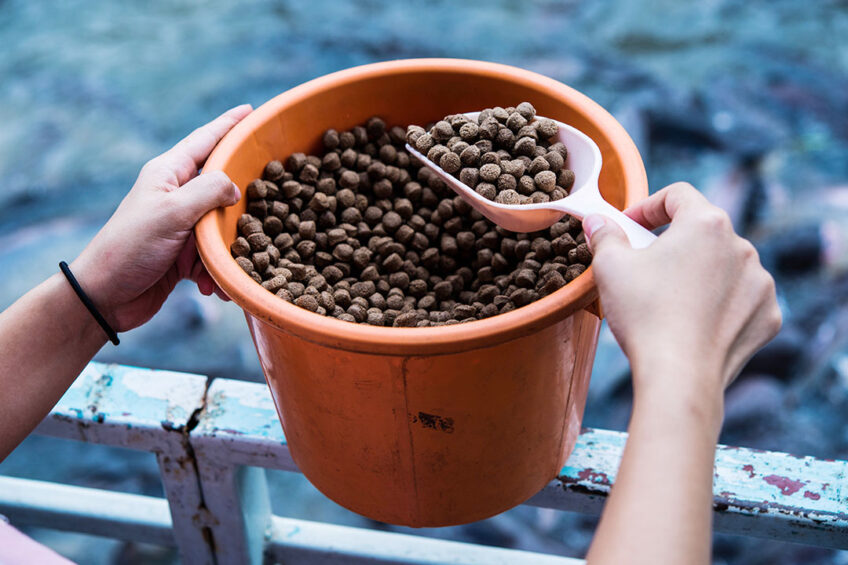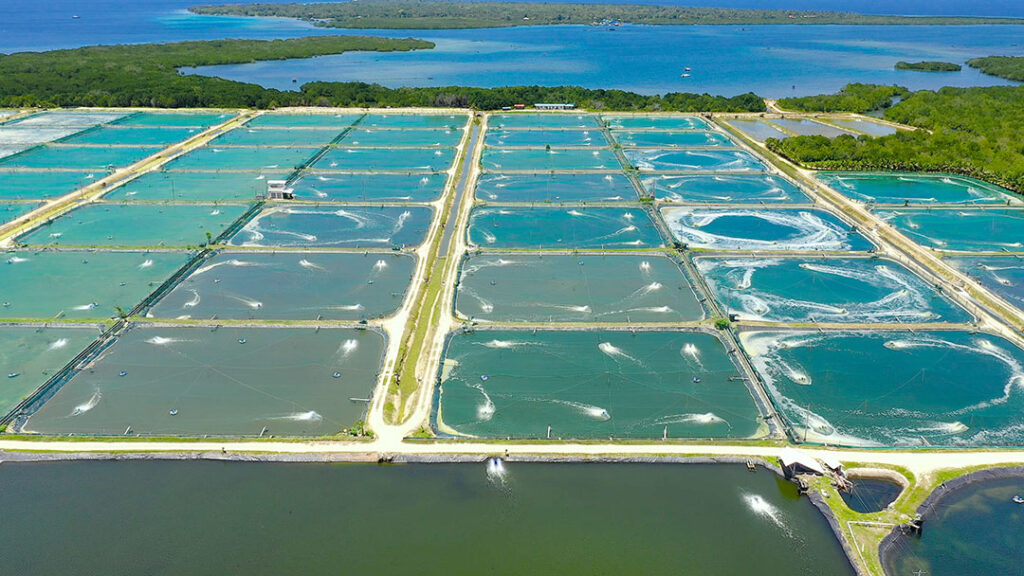European fish feed industry looking to new horizons

As European aquaculture offers limited growth opportunities, fish feed manufacturers have set their sights on international markets.
The past few years have been packed with challenges for European fish farmers. The industry was hit with an increase in general costs, ranging from feeds and staff to energy, that put heavy pressure on the economics of fish farming companies, says Javier Ojeda, general secretary of the Federation of European Aquaculture Producers (FEAP).
In 2023, the industry suffered from a waning demand on the European market, stemming from higher retail prices and the tightening of household budgets. The higher retail prices did not fully compensate producers’ higher operational costs, he adds.
Disappointing results
The severity of the situation differed from one country to another, but the overall picture was grim. In November 2023, the European Court of Auditors (ECA) published a report indicating that, in general, EU aquaculture production had been at a stillstand for almost 7 years.
This happened despite substantial support of €1.2 billion made available to fish farmers for 2014-2020. “The EU has cast its nets wide for the aquaculture sector in recent years, as it is a major element in its Blue Economy strategy. But they remain disappointingly empty,” says Nikolaos Milionis, the ECA member who led the audit.
Fish farmers disagree with report
European fish farmers do not fully agree with the survey results. In a position paper FEAP shared with All About Feed, the organisation pointed to several essential shortcomings in the report. For example, farmers insist that the auditors focused on the negatives of aquaculture but failed to underline its positives: efficiency in the use of natural resources, low carbon footprint, little use of space and fresh water, and providing highly nutritious food. Basically, this means that the money spent by the European authorities was not in vain. However, the fish farmers admit that the industry is failing to achieve its potential.
A common aquaculture policy
To turn the tide, FEAP is confident that food production in the EU will become an objective with a similar level of importance as environmental protection. As with agriculture, aquaculture also needs a common policy.
“A common aquaculture policy could exercise the necessary pressure to align public administrations and solve the technical bottlenecks of spatial planning and licensing procedures, among other things,” the FEAP notes in its position paper.
Fish feed market under pressure
Just as European aquaculture production has lacked growth in recent years, so the fish feed market has also drifted sideways. Market demand for fish feed in the EU was stable, from an overall perspective in 2022–2023, says Alexander Döring, FEFAC secretary general.
“Clearly, the Covid-19 pandemic had a significant impact on EU aquaculture as consumer demand for seafood and farmed fish shifted away from out-of-home catering and restaurants, which provide more added value, to retail,” Döring notes.
Döring admits that the energy crisis and inflationary pressures have affected the cost of fish feed production but also allowed adjustments to the process for fish. However, consumer demand will move to ‘cheaper’ offers for fish, again reducing the profitability of aquaculture farms.
This doesn’t mean the European market has no opportunities for fish feed manufacturers. The European fish feed market directly reflects what is going on in the aquaculture market which is a relatively mature market, albeit with limited growth, says Therese Log Bergjord, CEO of Skretting.
“Nonetheless, we see that there are still a number of growth opportunities presented by the introduction of new species, such as yellowtail, sole and meagre. The burgeoning potential within new farming systems – like recirculation systems, CAS [Fish Catch Assessment] and offshore farms – will have an impact as well,” Bergjord notes. Generally, 2023 was a good year for Skretting.
We saw clear signs of recovery after a challenging 2022 which was marked by the war in Ukraine and the after-effects of the Covid-19 pandemic. Performance varied from region to region, but overall, it was good
Log Bergjord, CEO of Skretting.
Gorjan Nikolik, senior global specialist in seafood at RaboResearch Food & Agribusiness, notes that a hike in commodity prices has affected all players in the European fish feed market over the past few years. “Commodity prices soared mainly in 2021 and 2022. We were expecting the trend to reverse last year but that didn’t happen, with fish meal and fish oil prices climbing ever further,” Nikolik adds. Despite that, European fish feed manufacturers have largely managed to maintain their business margins over the past couple of years. “In Europe, we are particularly driven by the salmon industry, where things were a lot better 7-8 years ago for fish manufacturers,” Nikolik says, adding that demand on the open market was hit by vertical integration, as big companies tend to manufacture fish feed in-house.
Tough regulatory pressure
However, European business organisations believe that the greatest hindrance to aquaculture comes not from rising production costs but from an excessive administrative burden.
FEAP states that aquaculture growth is held back by an administrative burden caused by overzealous implementation of environmental regulations, a non-level playing field for imports and confusing consumer information.
“We fully support the FEAP response to the ECA report, pinpointing the real ‘admin burden’ bottleneck to very limited growth in the EU aquaculture sector. We do not consider fish feed production a ‘bottleneck’ to growth, as highlighted during the consultation on the EU strategic guidelines,” Döring says. “In fact, our innovations are geared to support sustainable growth in EU aquaculture, further reducing its already very low environmental footprint,” Döring stresses.
Besides, aquaculture, including fish feed, is under growing scrutiny regarding its impact on climate change and water quality. In light of this, FEFAC supports the development of globally harmonised fish feed sector tools, like the Global Feed LCA Institute, which provides LCA [Life Cycle Analysis] data for key fish feed ingredients, enabling accurate and comparable calculation of the environmental impacts of feed. FEFAC supports an EU PEF [Product Environmental Footprint] pilot on seafood and fish feed that will provide a robust footprint methodology all along the seafood and aquaculture value chain.

Looking beyond borders
Most feed industry sectors mostly depend on their domestic markets, simply because it is usually not justified to transport feed over longer distances. Besides, localising production overseas is often tricky. The fish feed sector is an exception, however, as leading European manufacturers increasingly rely on foreign markets.
For Skretting, the EU, including Norway, represents around 25% of the fish feed business. “We see healthy development in Norway and also expect growth in other regions, specifically continued growth in Ecuador in shrimp, and also a step-up in China and India,” Bergjord says.
Growth in shrimp feed has had particular significance for some prominent European manufacturers, Nikolik indicates. Nutreco and Biomar, in particular, have seen solid growth in Ecuador and also gained a foothold in Asia. “Shrimp has become a powerful growth driver for these companies, particularly in 2023 when Ecuador saw double-digit growth,” Bergjord reports, estimating that the shrimp secured even better margins.
Nikolik believes that the expansion beyond Europe was the key factor that made business for European fish feed manufacturers very good in 2023. Expansion to Latin America, Asia and Africa has played an essential role in the business diversification strategies of all leading European fish feed manufacturers, he says. That expansion took different forms, from joint ventures with local players, to building greenfield plants and acquiring small local firms. Between 30% and 75% of the business of European fish feed manufacturers is now no longer in Europe, Nikolik claims.
This ongoing global expansion became possible because western companies are technological leaders in the fish feed sector. “Overall, I’m positive about the future of the European fish industry. A growth in output is expected all over the world, and these [European] manufacturers are very well positioned to capture it. They have a better chance of doing that than their Asian and, specifically, Chinese competitors,” Nikolik says.
There are big players in China but those companies have yet to gain international recognition. “The biggest question for me is how will European manufacturers perform in Asia, where they face stiff competition from local businesses. This will probably be accompanied by mergers and acquisitions,” says Nikolik.
“We expect the industry markets to continue to grow, although this will vary between species and countries,” says Bergjord.
“We will see more progress in new farming technologies this year. We will still see disruptions and uncertainties in the supply chain but markets will be more stable than they have been in the last couple of years. And although the latest estimates indicate that El Niño is going to weaken over the next few seasons, we still see environmental changes impacting our industry. Close cooperation with our customers and the application of more innovative solutions will be key,” concludes Bergjord.











